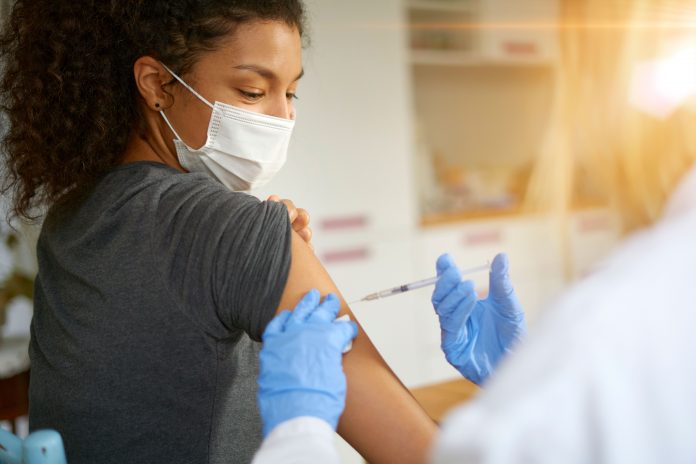
Early stage cervical cancer rates fell by an annual 1.6%, but cases of advanced disease have increased by nearly 1.5% in the U.S. every year for the last couple of decades, a new study shows. The steepest rise in new cases of advanced womb (cervical) cancer in the U.S. is among White women, who are significantly less likely to have received the Human Papilloma Virus (HPV) preventive vaccine or to be screened for the disease. However, Black women have the highest rates of advanced womb cancer, which is much deadlier than early stages.
This research was published online in the International Journal of Gynecological Cancer. It was led by researchers at University of California Los Angeles (UCLA).
“This finding demonstrates the public health imperative to vaccinate more young girls and women [against HPV],” the researchers write.
A dramatic drop in cervical cancer rates followed from the introduction of the HPV vaccine. “91% of all cervical cancer is caused by HPV,” the study’s lead author, Alex A. Francoeur, MD, of the UCLA Department of Obstetrics and Gynecology, told Inside Precision Medicine.
“The lower rate of vaccination in White women, coupled with non-guideline screening in this population could explain the trend toward the higher rate of increase in distant disease in White women,” the researchers write.
Advanced (stage IVA-B) disease that has spread beyond the pelvis to the bladder/rectum and/or other parts of the body is still relatively rare. But only around 17% of those diagnosed at this stage will survive at least 5 years compared with 92% of those diagnosed with early stage disease.
These researchers drew on cervical cancer data submitted to the United States Cancer Statistics program and national survey findings on screening and vaccination for 2001-18. During this period, 29,715 women were diagnosed with advanced disease. After adjusting for age, the rate of advanced disease was much higher among Black women than it was among White women:1.55/100,000 of the population compared with 0.92/100,000.
The highest number of cases were diagnosed in the South at 1.17/100,000, followed by the Midwest at 0.93/100,000, the Northeast at 0.87/100 000, and the West at 0.82/100,000.
Those most at risk were 55-59 year-old Black women living in the South, with a rate of 2.61/100,000—nearly double that of their White peers in the South (1.39/100,000).
Increasing rates of obesity and older age at first birth could be contributing to the rise in this type of cervical cancer, the researchers suggest.
Compared with Black women, White women were nearly twice as likely (26.5% vs 14%) not to be screened at all or not to be screened in line with clinical guidelines, and so subject to a gap of 5 or more years between smear tests.
HPV vaccination uptake was lowest among White 13–17 year olds, two thirds of whom were vaccinated compared with three quarters of those from other ethnic backgrounds. The steepest annual increase in vaccination rates (7%) was among Black teens.
This could be because they believe “the HPV vaccine doesn’t apply to them. This could be from the misconception that the vaccine is associated with sexual activity when the concept is to give the vaccine to kids before they are sexually active and have been exposed to HPV,” said Francoeur.
In their paper, the researchers note, “Even with screening and vaccination, there is not one racial/ethnic group, region in the USA, or age group where distant stage cervical cancer has been decreasing over the last 18 years.”
“This challenges the idea that Black and Hispanic women have higher rates of distant stage diagnosis due to lower access to screening,” they added.











